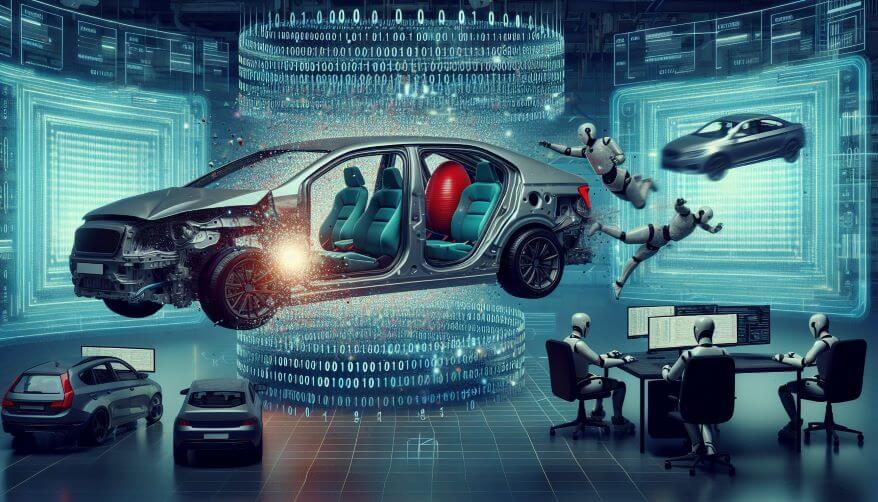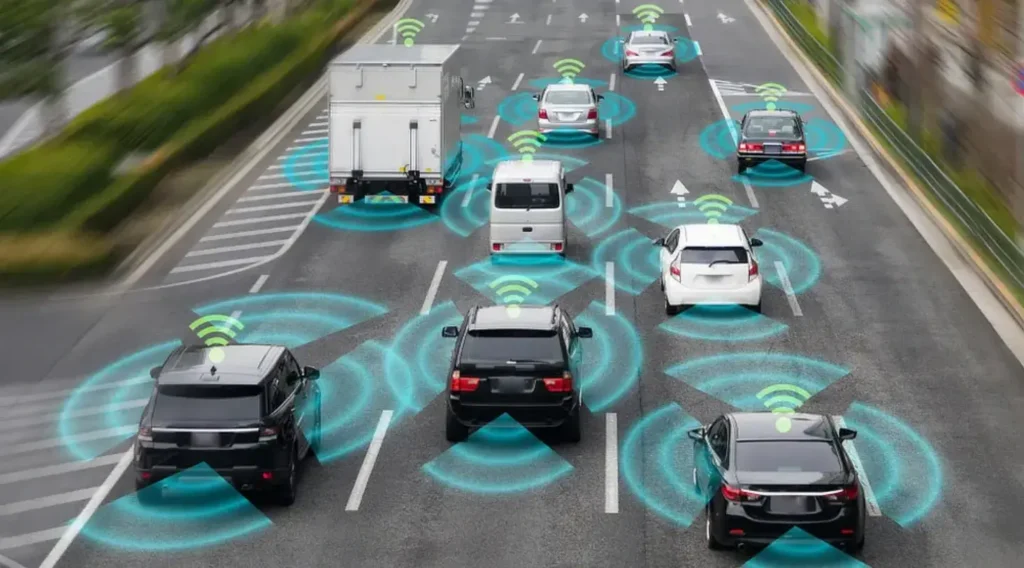Gone are the days when a simple video clip was the best a dashcam could offer. In 2025, AI-powered dashcams have transformed cars into intelligent observers—capable of detecting, analyzing, and reacting to events on the road. Whether it’s identifying reckless driving, alerting authorities in real time, or documenting an incident with pinpoint accuracy, AI dashcams are turning every car into a smart witness.
This article dives deep into how AI dashcams work, their benefits, ethical implications, and why they’re becoming a standard in both personal and commercial vehicles.
Introduction to AI-Powered Dashcams
Traditional dashcams record video footage continuously or upon detecting motion or collision. But AI dashcams go far beyond passive recording.
What Makes a Dashcam “Smart”?
- Real-time object and behavior recognition
- Automatic incident tagging
- Event prediction and proactive alerts
AI dashcams are equipped with machine learning algorithms that can distinguish between a pedestrian, another vehicle, a traffic sign—or even a moment of driver distraction. These systems turn ordinary footage into actionable data.
How AI Dashcams Work
At the heart of AI dashcams are advanced sensors and AI chips that interpret the environment. These include:
- Wide-angle HD cameras
- Infrared sensors for night vision
- IMUs and GPS modules for spatial awareness
- AI processors to analyze video in real-time
Once activated, the dashcam uses deep learning models to:
- Track speed, braking, lane position
- Monitor vehicle proximity
- Analyze driver and passenger behavior
The system can then decide when to log events, send alerts, or store video clips to the cloud.
Real-Time Event Detection and Incident Logging
One of the most valuable features of AI dashcams is their ability to automatically detect and record safety-critical events, including:
- 🚨 Collisions or impact
- ⚠️ Harsh braking or acceleration
- 🔄 Rapid lane changes or swerves
- ⛔ Stop sign and red-light violations
Instead of recording hours of uneventful footage, AI dashcams capture only the most relevant, timestamped clips, making them incredibly useful for insurance claims or post-incident reviews.
Facial and Driver Behavior Monitoring
Many AI dashcams are equipped with inward-facing cameras and can use computer vision to monitor the driver for:
- Drowsiness and microsleep detection
- Phone use or distraction
- Smoking, eating, or other high-risk behavior
If dangerous behavior is detected, the system can:
- Sound an alert
- Send a notification to fleet managers or guardians
- Log the event for later review
This feature is especially valuable in fleet management, teen driver monitoring, and ride-hailing platforms.
AI for Exterior Analysis and Road Safety
AI dashcams also analyze what’s happening outside the vehicle:
- Detecting lane departures
- Monitoring speed limit compliance
- Identifying pedestrians, cyclists, or vehicles entering the path
- Recognizing traffic lights and stop signs
The AI uses this information to warn the driver in real-time, contributing to proactive crash prevention.
Benefits of AI Dashcams for Drivers
| Benefit | Description |
|---|---|
| Legal Protection | Video + AI event logs support accident claims and reduce false liability |
| Insurance Evidence | Easily provide timestamped, tagged incidents for quicker claims |
| Driving Improvement | Alerts and feedback promote better habits and reduce risky behavior |
| Peace of Mind | Know you’re protected in parking, driving, and rideshare scenarios |
AI Dashcams in Fleet Management
For companies managing delivery vans, logistics fleets, or service vehicles, AI dashcams are essential for:
- 📊 Driver performance tracking
- 🔄 Route optimization
- 💰 Reducing fuel waste and insurance costs
- 📉 Lowering accident frequency
They also offer real-time dashboards, allowing fleet operators to intervene or coach drivers as needed.
Integration with Cloud and Mobile Apps
AI dashcams are usually connected to cloud platforms, enabling:
- 📱 Mobile access to live or recorded footage
- 📂 Secure video backups
- 🛑 Real-time notifications for emergencies
- 🧠 Data analysis across large fleets
Brands like Nextbase, Owlcam, and BlackVue offer apps that sync instantly and even upload footage automatically after an incident.
Privacy and Ethical Concerns
While AI dashcams offer compelling safety and legal benefits, they also raise significant privacy and ethical questions—especially when they monitor the vehicle’s interior.
Key Privacy Challenges:
- In-Cabin Surveillance: Constant driver monitoring can feel invasive.
- Data Ownership: Who controls the footage—driver, employer, or dashcam provider?
- Third-Party Sharing: Concerns over data being sold to insurers, advertisers, or law enforcement.
To address these concerns, leading manufacturers are implementing:
- End-to-end encryption
- Consent-based features (especially for rideshare vehicles)
- Customizable recording modes (e.g., disabling cabin view unless triggered)
Countries like the U.S., Germany, and South Korea now require explicit notification or consent when AI dashcams are recording inside the vehicle.
AI Dashcams vs Traditional Dashcams
| Feature | Traditional Dashcam | AI Dashcam |
|---|---|---|
| Video Recording | Yes | Yes |
| Real-Time Alerts | No | Yes |
| Object Recognition | No | Yes |
| Driver Behavior Monitoring | No | Yes |
| Cloud Connectivity | Optional | Often standard |
| Data Tagging & Event Detection | Manual review required | Automatic classification |
| Fleet Management Integration | Limited | Advanced dashboards and APIs |
AI dashcams go beyond recording—they provide context, analysis, and automation, making them vastly more useful in dynamic driving environments.
Case Studies of AI Dashcams in Action
🚘 TeslaCam
Tesla’s integrated dashcam system uses vision-based AI to capture road events, monitor surroundings via multiple cameras, and even record potential break-ins using Sentry Mode.
🚚 Nextbase iQ
One of the most advanced aftermarket AI dashcams, offering:
- Live view via app
- Driver alerts
- Incident response via emergency services
🚕 Owlcam
Designed for fleet and gig economy drivers, Owlcam provides:
- Dual-facing cameras
- AI-triggered event clips
- Real-time access and theft alerts
Each system demonstrates how AI dashcams serve as active safety tools, not just passive recorders.
Role in Accident Reconstruction and Legal Disputes
AI dashcams can play a pivotal role in legal and insurance processes by:
- Providing timestamped, GPS-tagged footage
- Reconstructing accident scenes with AI-analyzed visuals
- Generating chronological event timelines (e.g., impact detected, driver distracted, braking occurred)
These insights can help determine fault with greater precision, especially when driver statements conflict or when no eyewitnesses are present.
Insurance Industry Adoption of AI Dashcams
Insurers are increasingly supportive of AI dashcam adoption due to:
- Improved claims processing time
- Fraud prevention through verifiable footage
- Behavior-based premium discounts for safe drivers
Usage-based insurance (UBI) policies often offer discounts of 10–30% for vehicles equipped with AI dashcams, especially in commercial fleets.
Future of Smart Dashcams Beyond 2025
AI dashcams are set to become even more powerful and integrated with:
- Advanced Driver Assistance Systems (ADAS): Dashcams that directly influence braking or alert ADAS modules
- Vehicle-to-Everything (V2X) communication: Sharing road hazard data with nearby vehicles or infrastructure
- AI Accident Predictors: Real-time risk assessments based on driver behavior, traffic flow, and environmental data
- Post-Crash Forensics Tools: Dashcams that automatically send incident packages to emergency services or insurers
The result? Smarter roads where every vehicle becomes a safety sentinel.
Conclusion
AI dashcams represent a bold step forward in automotive safety and accountability. No longer limited to passive recording, these devices now function as real-time, intelligent observers—able to detect danger, alert drivers, and offer crucial evidence when it matters most.
As adoption grows, we can expect fewer accidents, faster legal resolutions, and more confident drivers on the road. In short, AI dashcams are not just tools—they’re transforming cars into smart, responsible citizens of the road.


